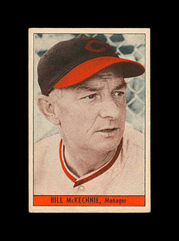

Early Gum Cards, etc.
The years between the start of the Depression and the start of World War II may have been bad for the U.S. economy, but they truly were a golden age for baseball as the generation of Babe Ruth and Lou Gehrig overlapped with that of Joe DiMaggio and Ted Williams. American Caramel got things started in 1932 with a set that recalled the Cracker Jacks sets of 1914-15. Goudey Gum responded with its landmark 1933 "Big League Gum" series. The Boston-based company followed that one up with
their 1934 "Lou Gehrig Says" series.



Next, National Chicle of Cambridge, MA, got in on the action with its Diamond Stars and Batter-Up sets in 1934. The artwork on the Diamond Stars perfectly captures the art deco style of the times, while the Batter-Up set perfected the concept of a die-cut card. But the economy faltered, and National Chicle made its last cards in 1936. included here are Hall of Famers Lefty Grove, Mel Ott, Jimmy Foxx, Frankie Frisch, Heinie Manush, Rick Ferrell, Goose Goslin and Ted Lyons. The company also produced a variety of premiums, a few of which are included here.


For type card collectors, the 1930s offer many possibilities. Goudey and National Chicle produced an assortment of premiums, as did other manufacturers like Tattoo Orbit, Delong, Gold Medal Flour and a couple Canadian companies, World Wide Gum and O-Pee-Chee. There are many Hall of Famers represented here, including Babe Ruth, Rogers Hornsby, Lefty Grove, Mickey Cochrane, Dizzy Dean, Hank Greenberg, Frankie Frisch, Lefty Gomez, Charlie Gehringer, Gabby Hartnett and Honus Wagner, the latter as a coach. Also included are some pre-WW2 "picture pack" photos, which were typically sold at stadiums. and offered fans something to collect during the war, when paper shortages made card sets scarce.

In 1936, Wheaties came out with the first of many back panels that showcased baseball's stars. Over the next three years, they introduced a variety of designs, including a very colorful one that's known as Series 9 (see Joe DiMaggio below), one of several that came out in 1937.

Exhibit cards were produced throughout the Depression and war years. From 1929 to 1938, the company switched to a 4-in-1 format, but returned to individual player cards in 1939 with its "Salutations" series.

In 1938 and 1939, the Cincinnati Reds produced a series of cards that showcase a team on the rise — they won the pennant in '39 and the World Series in '40. The series is called W711-1 in the American Card Catalog. A second series with a different look, known as W711-2, came out in 1940.

Patterned after the 1940 Reds set, the 1941 Cardinals and Browns sets were also sold in boxes as team sets. Pictured below are all-star first baseman George McQuinn, slugging third baseman Harland Clift, and Chet Laabs.

In 1939, Gum Inc. of Philadelphia made the first of its three Play Ball sets. World War II ended that venture, but the company returned in 1948 with a new series of cards under the banner of Bowman Gum.

The last set of the pre-war era worth mentioning is the 1941 Double Play series, which, like its name implies, features two players per card. The ones pictured here were cut apart and taped back together.

©2024




















































































































































